
Zendesk News Roundup for October 2024
Welcome to October’s Internal Note! This issue started light—until Zendesk dropped a dozen features late last week. Explore updates like the Zendesk QA redesign, the rollout of Agent Home with tips and tricks, improvements to omnichannel routing, and more exciting new features!
Welcome to Octobers' newsletter. When I started preparing this article two weeks ago it felt like a very light issue. That was, until Zendesk opened the floodgates late last week and releases a dozen features all at once.
Thanks Zendesk!
🏢 Company
Rebranded Zendesk QA
Last year Zendesk bought Klaus as a way to bring in Quality Assurance into the Zendesk platform. It allows for automatic processing of all your tickets – both those handled by AI Agents and human alike – and gives you insight in quality or responses, customer feedback, dangers like churn and surfaces tickets that warrant attention.
This month Zendesk fully moved Klaus into the Zendesk platform by redesigning the UI to better fit with the rest of the Zendesk platform, and also made the new features available in two specific license options:
- Zendesk QA add-on: Get Zendesk QA for all your agents
- WEM Add-On: A new add-on SKU bundling Zendesk QA and WFM, it's scheduling and employee management tool.
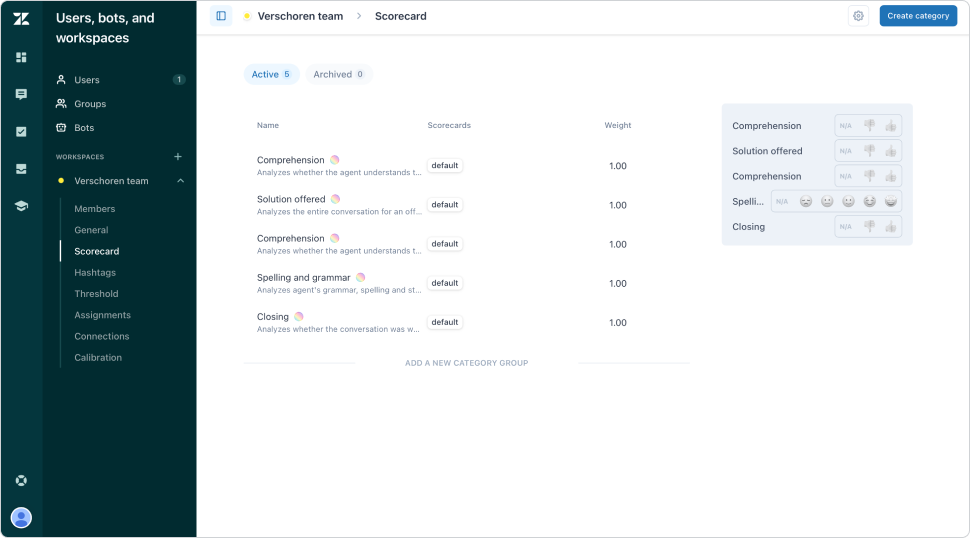
🎉 New Releases
🤖 AI Agents
It seems to be quiet before the storm when it comes to AI Agents. Next week Zendesk has their AI Summit (with a digital broadcast a week later) so I think we can see a lot new bigger releases then.
👨🏻💻 Agent Workspace
Agent Home
Starting THIS week Zendesk will rollout their new Agent Home as the new experience for all customers who use Agent Workspace.
This means the old dashboard will be replaced with a new home page that gives agent direct access to assigned tickets, recent updates and followed tickets.It’s a big shift away from traditional view based workflows, but if you want to get the most out of this new experience, I’ve got you covered! I wrote a full article with the best tips and tricks to get started.

Leading up to this big release the Agent Home also got an update with an expanded Channel filter that now includes all Zendesk channels ranging from web (forms, api, tickets created by agents), to Messaging (chat, social and web) to Child Tickets created via Side Conversations.
This is a big release!
Updates to Omnichannel Routing
Omnichannel Routing still seems to be the way forward when it comes to having a strategy for assigning and distributing tickets to your team in Zendesk.
Up til now you could only assign tickets based on capacity. An available agent with the least assigned tickets would get the newest ticket assigned (if skills matched). With the new round-robin option you can now assign based on the last time a ticket was assigned to an agent, giving you a different way to distribute tickets.
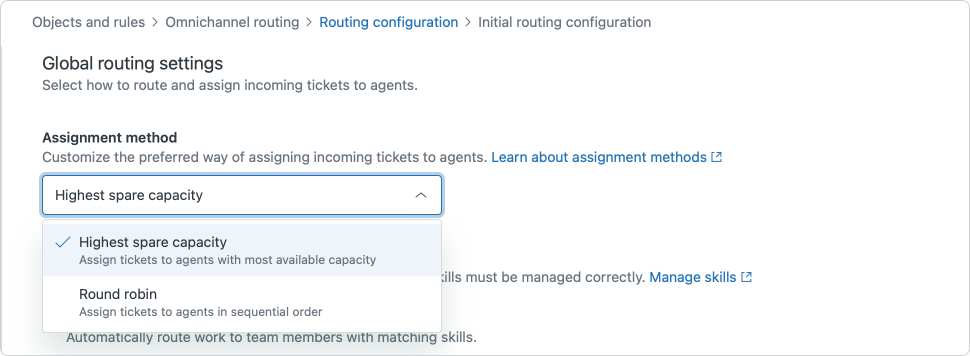
Additionally we can now make email tickets act similar to Messaging tickets and have them automatically open in a new tab for agents upon assignment. This way agents don't always need to go back to Agent Home (or a view) to check for new work.

And to conclude this months' routing updates, we now have the ability to add both new tickets that have never been assigned to an agent, as well as tickets that are reassigned to another group to queues. Until now tickets could only go into a queue once, but now when you reassign a ticket from your Support team to the Finance team, all queues and routing rules for that group will be applied.
Pretty useful and that will fix the routing logic for many customers!

Saved searches
The new search function with recent searches and built in filters was launches earlier this year. It offers a quick way to retrieve relevant tickets or users, and – at least for me – offers a nicer experience than the global search experience.

With this month's update you can save your search query so that you can run the same searches more easily. You can store up to 20 searches which you can give a unique name. Note, searches are per user so there is no global search filters to be shared.
Advanced AI
The Merge Suggestions feature for the Intelligent Panel has now been made available for all Advanced AI users. This new panel will surface active tickets from the same requester about the same topic, allowing agents to quickly merge them before working on the issue.
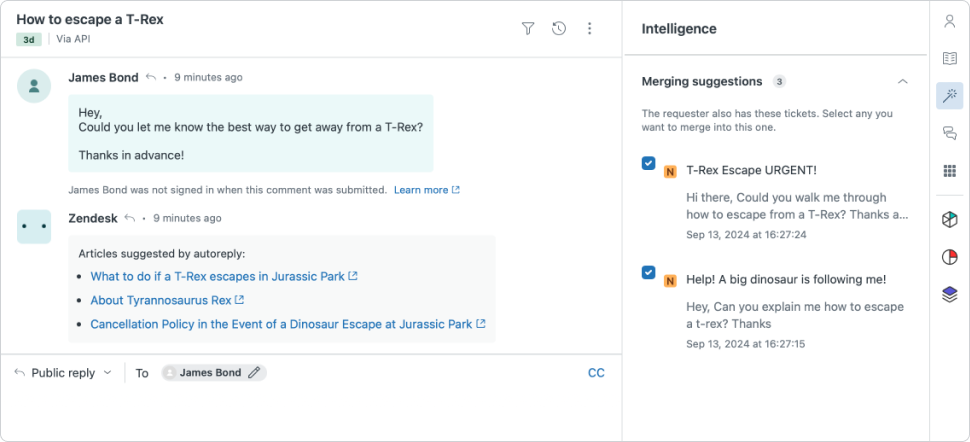
We also got a new education intent for Intelligent Triage and the Zendesk Bot, aiming to meet the specific needs of managing and updating information about education courses, examinations, admissions, scholarships, and student life.
View Categorization
Zendesk is pleased to announce the ability to categorize both your shared and personal views. Categorizing views creates a folder structure in Zendesk Support so that you can more easily navigate your views list.
I've got some views on Views, but I really like this new categorization feature. The more assignment and a list of your work moves towards Agent Home, the more we can start using Views as a way to get an overview of the outstanding work overall sorted by topic, priority, customer or team. This new categorization makes it possible to collapse similar views into nested sections, making a long list of up to a lot more manageable
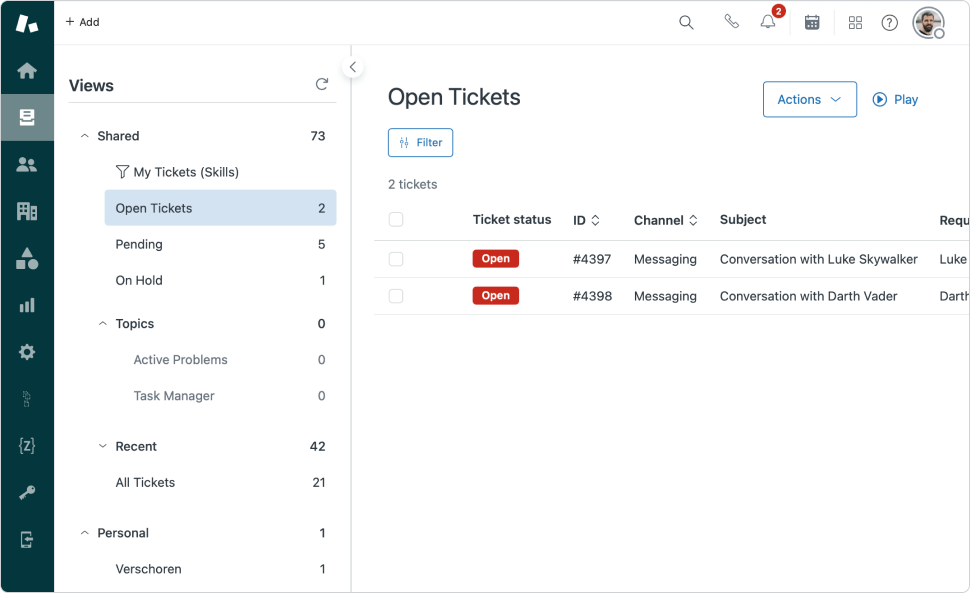

In addition to categorizing views, the limit for shared views has been increased from 30 to 100. This new feature does run the risk of enticing people to create even more views than before, but as long as you make sure there is one spot to see all work to be done sorted by service level or priority, I think you're good!
Estimated waiting time
One feature that got lost in the migration from Chat to Messaging was any sense of waiting time for the customer. With the recent introduction of Messaging triggers, these last few feature gaps are now being filled.
With this change, businesses can now set expectations on wait time with their customers. An admin can set up messaging triggers to share estimated wait times with customers after the messaging ticket is added to the queue. Wait time is estimated based on the ticket's position in the queue. They can also set up triggers to send a message once the messaging ticket is assigned to an agent.
Speaking of Messaging Triggers, keep an eye out for a new article on those later this month! Subscribe today for free to Internal Note to get this directly in your inbox!
Ending messaging sessions
It's now possible for agents to end a conversation with a customer right from within Agent Workspace by clicking an end session button.
Before this, you needed to solve (and close) the ticket via a macro or trigger to pass control back to an AI Agent, but with this new option, those hacks are not needed anymore.
I do feel a conflict between Messaging sessions with its send and end session button on one end, and the ticket status buttons on the other. The amount of times I've submitted a ticket instead of sending a reply is, well, a lot, and this might add additional confusion by adding yet another button to the Agent Workspace.

🔎 Help Center
No new releases this month for the Help Center, but we did get two fun EAPs!
- Support for Custom Objects in end-user forms (EAP to be found here).
- Support for multi-placement of articles (EAP to be found here).
Both are long-awaited items and once I get access to these, I surely write about them!
🧱 Open and Flexible Platform
Redaction suggestions
If you use the Advanced Data Privacy and Protection add-on you can now setup redaction suggestions that highlight PII for your agents in tickets.
Closed Tickets editing
You can now do limit edits on Closed Tickets via the Agent Workspace or Zendesk API. You can edit the Tags, Subject, and Priority ticket fields on closed tickets making it possible to tweak how these tickets show up in, for example, your reporting after Agents already wrap up the ticket.
📊 Reporting and Insights
Customizable CSAT
Earlier this year Zendesk announced the Customizable CSAT as a better way to ask customers for their opinion. The entire feedback from got a redesign, and customers can now:
- Edit the feedback form title and text
- Select a rating scale range with either 1-2, 1-3, or 1-5 scale increments, compared to the old thumbs up, thumbs down from before.
- Display rating options as numerical, emoji, or custom text
In your reporting these will still show up as Good/Bad though. Read more about this feature in the article below:
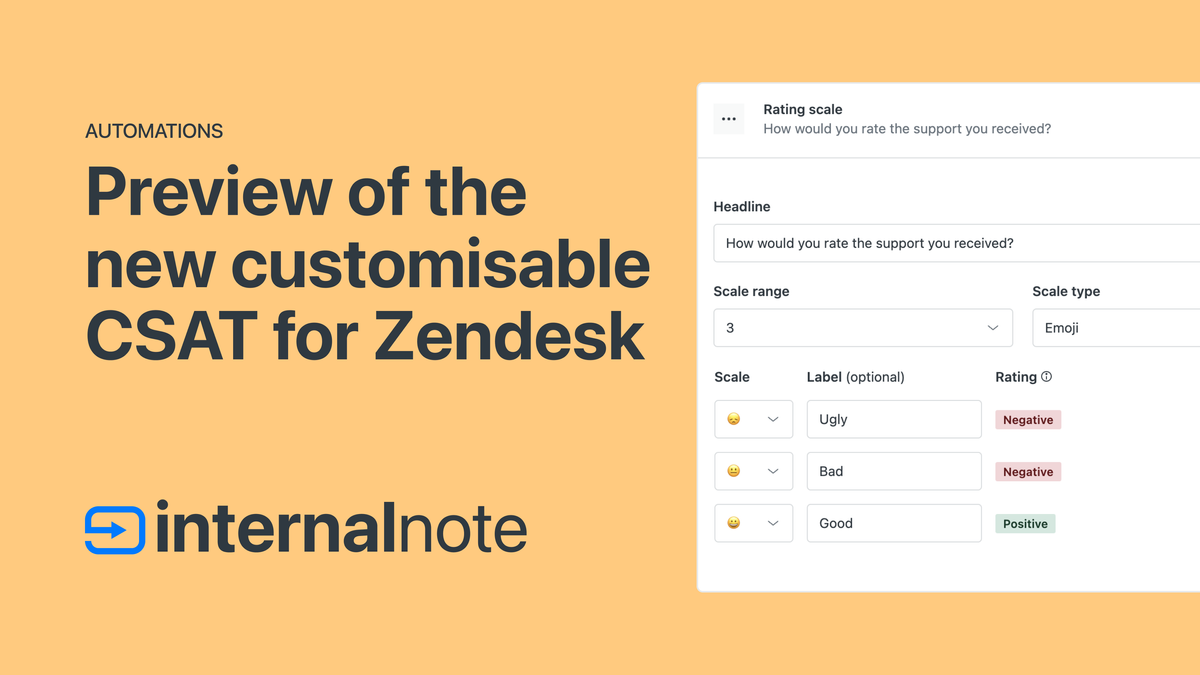
⚠ Major Changes.
2SV Authentication
Starting end of October Zendesk will start rolling out (and enabling) a new security feature to all customers:
Customers who have Zendesk authentication turned on will be automatically enrolled in 2SV. When customers sign in from a new device, 2SV will prompt them to enter a 6-digit code they must retrieve from the primary email address on file before they can sign into their account.
This will be annoying for customers that share credentials across employees or with third parties, but is a welcome change from a security/phishing/credential leak standpoint.
Read more here
Sunshine Conversation integration deprecations
When Zendesk bought Smooch a few years ago they rebranded it to Sunshine Conversations, added the APIs right inside the Admin Panel, and basically left the rest of the platform alone.
Apparently that's now changing with a first set of deprecations of existing platforms:
- Deprecation of Sunshine Conversations’ Slack Connect Integration on Sept 12th
- Deprecation of Sunshine Conversations’ Help Scout Integration on Jan 6th 2025
💡Insights
The information on Resolution Based pricing
Instead of charging businesses based on how often they use the software—essentially an AI chatbot—to try to resolve customer problems, Zendesk began charging them only when the chatbot completed the task without needing employees to step in.
Grace Hopper on Data Storage
[11:30] I thought up a couple of curves. I have no numbers to put on them and research hasn't been done yet – But at least I think I can talk about the shape of them. Suppose this is dollars, and this is time --
And an event occurs here. Now the value of the information about that event goes up quite sharply immediately after the event, which the further you get away from the event in time, the more the value of that information levels off. It goes up very sharply and it levels off. Now ultimately, it either gets replaced by a new
piece of information, or we decide we don t need it online anymore and we transfer to historical files, microfilm or something like that. Of course, in industry they have to save it for the IRS, so the value curve probably look something like that: a sharp rise, a leveling off, and then an eventual transfer to some form of historical file.
What about the cost of that information? Cost of information is very, very low at the time of the event, but the further you get away from the event in time,
the more the cost you pile up to start, maintain it, and add any information to it. So the cost curve starts low and then it goes zooming up – Now there is a lovely crossover point there – that is the point at which keeping that information in our online system is costing us more than it's worth to us.
I saw this presentation last week and this specific section made me think of Zendesk's storage pricing. Keeping all tickets is relevant to feed your reporting, to use them in the Intelligent Panel similar tickets, and as a reference for Content Cues and Macro Suggestions.
On the other hand pulling information from tickets that are 2, 4, 8 years old becomes less and less useful overtime. So each company has some kind of crossover point where the usefulness of those old tickets is not worth the cost of keeping them around.
Cards Against Complexity: A Podcast
The podcast where we dive deep into the world of customer experience (CX) with a twist! Whether you're a seasoned CX expert or just starting out, join us for real conversations on complex service topics, and laugh a little along the way.
The team at Next Matter launched a new podcast focussing on CX with a twist. The first episode features Julian from Babelforce. Fun to see how close the Zendesk partner ecosystem works together!

📝 Articles this month
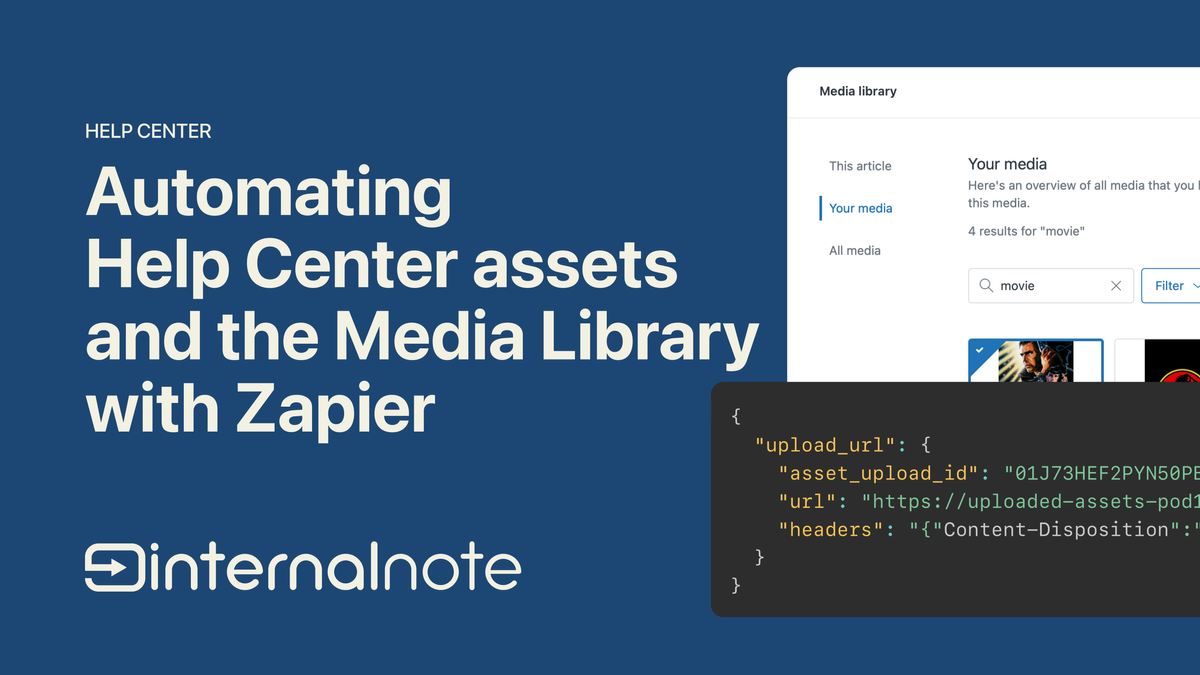
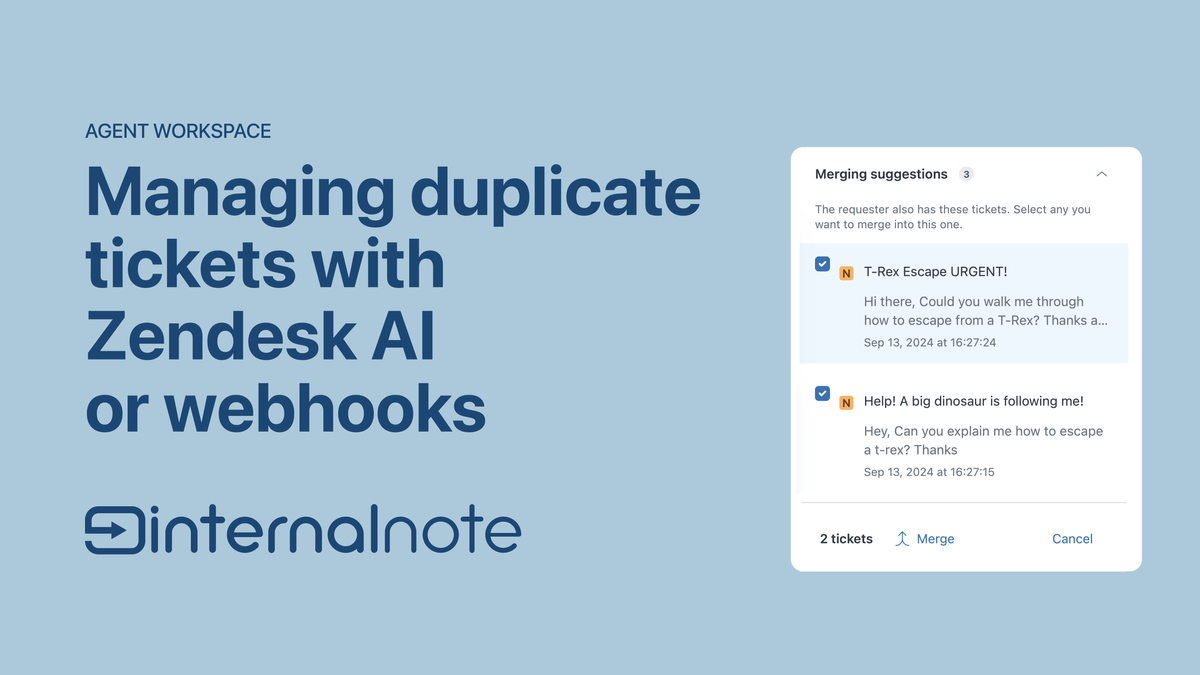
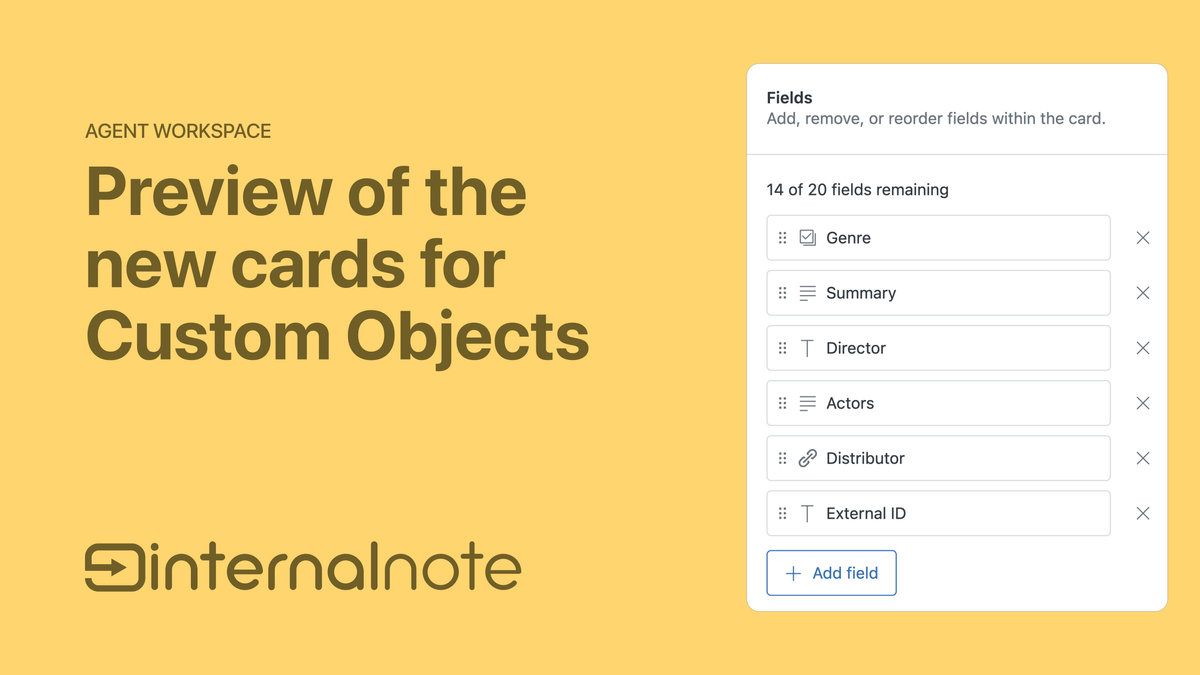
And Finally...
All unassigned messaging conversations become inactive after 10 minutes without end user interaction. The standard omnichannel routing configuration counts only active messaging conversations towards an agent's capacity. This behavior is controlled by the messaging activity routing setting. When messaging activity routing is off, messaging tickets that become inactive while still in a queue can be assigned to any available agent without taking up their capacity.
Omnichannel Routing.. just when you thought you understand it, they throw you another random feature that makes it confusing again 😅😅
Thanks for reading!










